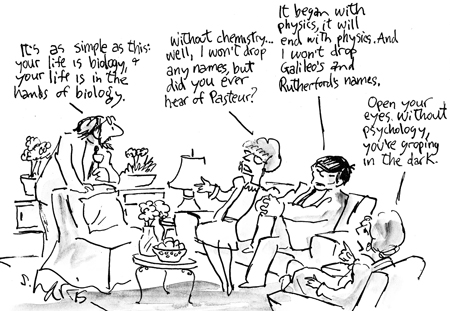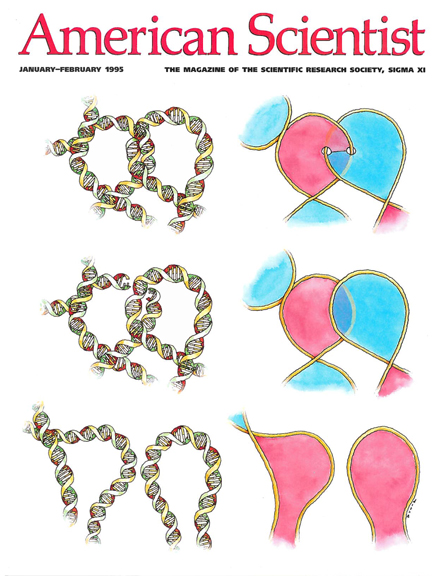Macroscope, Rebooted
By Katie L. Burke
American Scientist’s print magazine is published every two months, and we value the time that cycle affords us in crafting high-quality, in-depth stories about scientific research. But with this blog, we hope to provide readers with more varied and more frequent content.
March 13, 2015
Macroscope Communications

Cartoon by Sidney Harris.
American Scientist’s print magazine is published every two months, and we value the time that cycle affords us in crafting high-quality, in-depth stories about scientific research. But with this blog, we hope to provide readers with more varied and more frequent content.

The name Macroscope has a long history with American Scientist. It ran as the title of a column in the magazine for 18 years, starting in 1995, as a venue where scientists could reflect on their enterprise with a broad view. On this blog, guest bloggers will be keeping up the tradition by discussing the trends and current research on which they are keeping tabs.American Scientist has served as a venue for scientists to share and discuss salient topics with each other and the interested public for more than a century. Often, conversations happening in one field may be relevant to others. We have long fostered exchanges that encourage broad awareness against a tide of scientific specialization. We aim to spark the kinds of discussions that do not normally happen within academic journals or at tightly themed scientific conferences, expanding our readers’ breadth of awareness and dispelling misconceptions.
For example, when anthropologist Pat Shipman wrote a column about University of Rhode Island anthropologist Holly Dunsworth’s new hypothesis on the evolution of unique attributes of human childbirth and her questions about the support for an earlier hypothesis, we heard feedback from several readers. Both hypotheses address the question of why human childbirth is so laborious compared to other mammals. In the earlier hypothesis, the baby is thought to stay in the womb as long as possible to stave off the metabolic cost of lactation for the mother. Dunsworth maintains that the fetus is increasingly metabolically costly to the mother over the course of the pregnancy and that it is when she can no longer meet the fetus’s demands that labor commences. Dunsworth says responses to the column showed her that loyalty to the original hypothesis was more widespread than she had realized. "I’m more attentive to the existing assumption that lactation must be put off as long as possible when I write and talk about this issue," she notes. In addition, bat expert Allen Kurta wrote a response to the column about some of the overlooked similarities between certain bats’ birthing and that of humans. Dunsworth is now taking that information into account as her research progresses.
To provide a platform for creating such conversations online and contributing to ongoing ones, we present the blog Macroscope as a web-based medium for researchers to share their thoughts about puzzles, paradigms, and problems emerging in their field or across fields. We hope you will join us.
American Scientist Comments and Discussion
To discuss our articles or comment on them, please share them and tag American Scientist on social media platforms. Here are links to our profiles on Twitter, Facebook, and LinkedIn.
If we re-share your post, we will moderate comments/discussion following our comments policy.